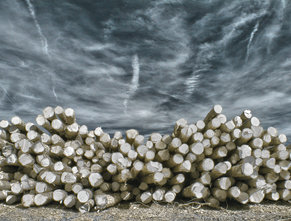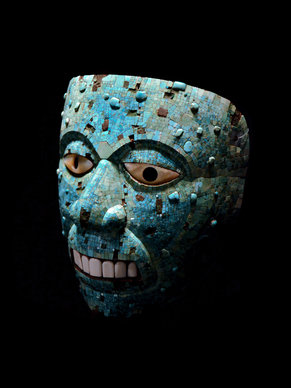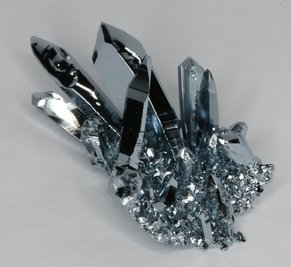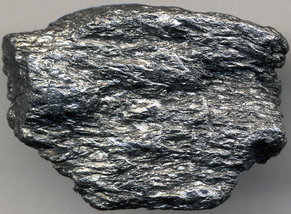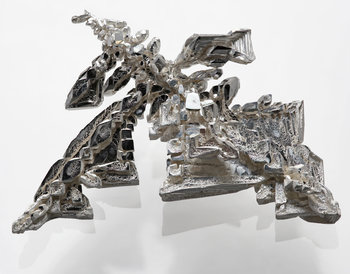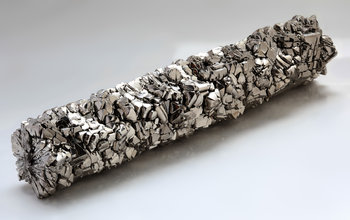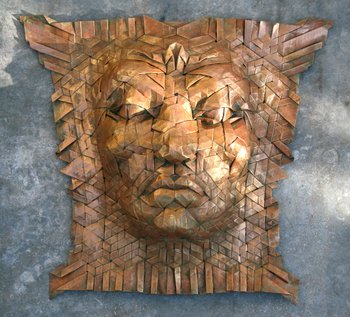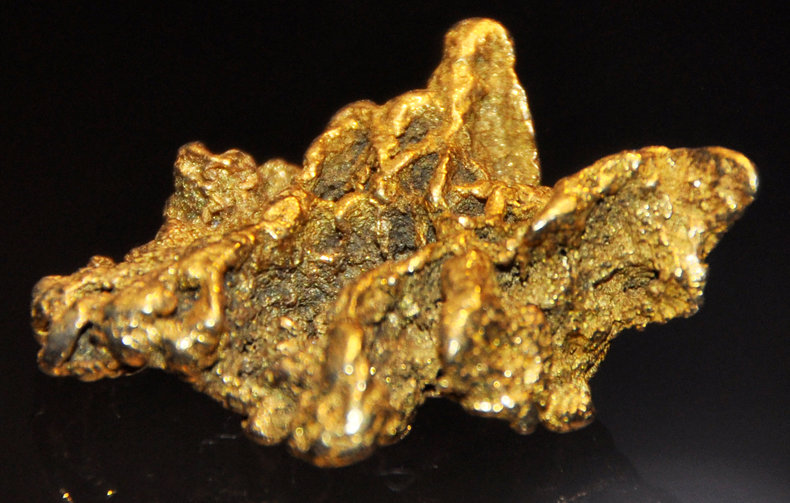
Properties
Gold is soft, dense, malleable, ductile and conducts electricity well. It is more than twice as heavy as iron with densities of 19.30 g/cm3 and 7.87 g/cm3 respectively. Although gold is heavy it's not the heaviest metal with Osmium being a little denser. Gold is the most malleable of all metals. For example, a single gram of gold can be beaten into a 1 square meter sheet of gold leaf. Gold is also considered unique for its color. Lustrous yellows with a slight reddish hue are commonly perceived as a gold color.Nonreactive
Gold is one of the least reactive elements that is resistant to oxygen, water and many acids and bases. Gold does react with some acids such as hydrofluoric, hydrochloric and nitric acid. The reaction of gold with acids is unique and is often used to test the authenticity of gold.Edibility
Gold is found in trace amounts in the body and elemental gold is commonly used as a food additive. This is typically done to create a premium product by adding an expensive metal. Several states of gold and gold compounds are toxic. For example, gold ion and gold salts are toxic.Medical Uses
There is a long history of using gold as a medicine. For example, it appears in a 1st century Greek medical encyclopedia titled On Medical Material authored by Pedanius Dioscorides. Modern medicine views elemental gold as nonreactive such that it is unlikely to have medical effects. However, gold salts and radioisotopes are used in medications. Gold alloys are also commonly used as a dental filling.History
Gold played a role as a currency and valued metal for jewelry and other prized objects throughout history. Gold is a lustrous metal that is nonreactive and malleable. These three properties ensured that gold was noticed by early civilizations. As gold is nonreactive, it occurs in its native metal form as nuggets, flakes and grains. These nuggets are malleable such that they can be shaped into lustrous metal objects with primitive tools. As such, gold attracted early attention with the first written reference to gold emerging in the 12th Dynasty of Ancient Egypt around 1900 BC.Culture
Gold is variously viewed as a symbol of wealth, goodness, wisdom and eternity. Human achievements are often rewarded with gold such as a gold star or gold metal. Gold is associated with foundational knowledge such as the golden rule or golden ratio. Wedding rings are traditionally made from gold to symbolize eternal vows. Negative connotations of gold are mostly related to greed and idolatry.Finance
Gold has been used throughout history as money. Money functions as a medium of exchange and store of value that stimulates economic activity as compared with a system of barter. Up until the early 1970s, most major currencies where convertible into gold. Gold still plays a role as an investment and store of value and is viewed as a defensive asset, particularly against inflation whereby fiat currencies lose their value over time.Production
Global gold production was 4,398 tons in 2017. By comparison, world iron production was 3,290 million tons in 2015. In other words, around 748,000 times more iron is produced than gold. Gold is rare and has been mined since antiquity. As such, the easy sites are gone. Low-grade gold ore may contain very small amounts of gold that are extracted with chemicals that may contain cyanide, cadmium, lead, arsenic and mercury. This often ends up in the environment or in hazarous waste dumps. Gold production is also energy intensive with up to 25 kW·h of electricity used to produce a single gram of gold.Gold Reserves
There is around 187,200 tonnes of gold in existence today. This could all be contained in a cube of about 70x70 feet. Much of the gold that exists today is held in national reserves. For example, the United States has reserves of 8,133 tonnes.Consumption
Gold is mostly used in jewelry and investment products such as coins and bars. It is also used in electronics, particularly electrical connectors. Total demand for gold is was 4,308 tonnes in 2016. This is very close to gold production levels. It should be noted that gold has an extremely high rate of recycling due to its price. For example, gold jewelry is often enthusiastically purchased by small gold dealers and resold as scrap metal.Geology
Most of the gold present in the Earth is believed to be in the planet's core. As a heavy element, gold was drawn towards the core when the Earth was in its molten state. Most of the accessible gold in the Earth's crust was delivered later by asteroid impacts. As such, gold can be found everywhere on earth such as in sea water with concentrated deposits at the sites of massive meteor impacts. For example, the Witwatersrand Basin in South Africa that has produced around 22% of the gold that exists today was the site of a massive meteor impact 2020 million years ago.Notes
Gold can be fingerprinted by recording the unique trace impurities in a particular sample.Creating gold from other metals, long the dream of Alchemists, is technically possible and was first achieved in Japan in 1924 using neutron bombardment of mercury. This isn't a commercially feasible way to produce gold and only creates radioactive isotopes of gold.| Overview: Gold | ||
Type | ||
Definition | A soft, dense, malleable, ductile, reddish yellow metallic element that has played a role in finance and culture since antiquity. | |
Related Concepts | ||

